-
 Bitcoin
Bitcoin $117900
0.31% -
 Ethereum
Ethereum $3766
0.28% -
 XRP
XRP $3.176
-0.31% -
 Tether USDt
Tether USDt $1.000
0.00% -
 BNB
BNB $795.6
1.51% -
 Solana
Solana $186.8
-1.09% -
 USDC
USDC $0.9999
-0.01% -
 Dogecoin
Dogecoin $0.2353
-1.33% -
 TRON
TRON $0.3226
1.49% -
 Cardano
Cardano $0.8172
-1.08% -
 Sui
Sui $4.178
3.06% -
 Hyperliquid
Hyperliquid $43.05
-3.39% -
 Stellar
Stellar $0.4367
-0.57% -
 Chainlink
Chainlink $18.62
1.47% -
 Hedera
Hedera $0.2828
6.63% -
 Bitcoin Cash
Bitcoin Cash $584.7
5.65% -
 Avalanche
Avalanche $24.81
2.53% -
 Litecoin
Litecoin $112.8
-0.88% -
 UNUS SED LEO
UNUS SED LEO $8.975
-0.08% -
 Shiba Inu
Shiba Inu $0.00001395
-1.07% -
 Toncoin
Toncoin $3.285
-1.05% -
 Ethena USDe
Ethena USDe $1.001
0.01% -
 Polkadot
Polkadot $4.123
0.76% -
 Uniswap
Uniswap $10.49
-0.18% -
 Monero
Monero $326.5
0.14% -
 Dai
Dai $0.9999
-0.02% -
 Bitget Token
Bitget Token $4.576
0.34% -
 Pepe
Pepe $0.00001247
-1.55% -
 Cronos
Cronos $0.1400
3.77% -
 Aave
Aave $295.1
-0.73%
Early morning high and then fall back to close the star: Is the main force testing the market or shipping?
Early morning high then fall back to close the star may indicate main force testing the market or shipping holdings, traders should analyze volumes and on-chain data.
Jun 10, 2025 at 03:22 pm

Early morning high and then fall back to close the star: Is the main force testing the market or shipping?
In the volatile world of cryptocurrency trading, observing patterns in price movements can provide valuable insights into the intentions of major players, often referred to as the "main force." One such pattern that traders frequently encounter is an early morning high followed by a fall back to close the star. This pattern raises a crucial question: Is the main force testing the market or shipping their holdings? To answer this, we need to delve deeper into the mechanics of these price movements and the strategies employed by large investors.
Understanding the Pattern
The pattern in question involves a cryptocurrency opening the trading day at a high price, often significantly higher than the previous day's close. As the day progresses, the price falls back, eventually closing near or at the opening price of the previous day, forming a star-like candlestick on the chart. This pattern can be indicative of various market dynamics, and understanding its implications requires a careful analysis of market conditions and trading volumes.
Market Testing by the Main Force
Market testing is a strategy used by the main force to gauge the market's reaction to certain price levels. By pushing the price up early in the morning, the main force can observe how other traders and investors respond. If the price holds steady or continues to rise, it might indicate strong buying interest and a potential continuation of the upward trend. Conversely, if the price quickly falls back, it could signal a lack of confidence or resistance at that level.
To determine if the main force is testing the market, traders should pay attention to the following factors:
- Volume Analysis: High trading volumes during the early morning spike can suggest that the main force is actively testing the market. If the volume decreases as the price falls, it may indicate that the test was not successful.
- Order Book Dynamics: Observing the order book can provide insights into whether there are significant buy orders at the high price levels. A lack of substantial buy orders could mean the main force is testing the market without real intention to sustain the price.
- Market Sentiment: Analyzing news, social media, and other market sentiment indicators can help traders understand if the early morning high was influenced by external factors or if it was a deliberate move by the main force.
Shipping by the Main Force
On the other hand, shipping refers to the main force selling off their holdings, often at a high price to maximize profits. An early morning high followed by a fall back to close the star could be a sign of the main force taking advantage of the initial surge to liquidate their positions.
To identify if the main force is shipping, traders should consider the following:
- Price Action After the Fall: If the price continues to decline after the initial fall, it may indicate that the main force is indeed shipping their holdings. A sustained downward trend could suggest that the early morning high was a last-ditch effort to sell at a high price.
- Volume Patterns: Consistently high volumes throughout the day, especially during the fall, can be a sign of shipping. If the main force is selling, they would need to maintain high volumes to offload their positions effectively.
- On-Chain Data: Analyzing blockchain data, such as large transactions and wallet movements, can provide clues about whether significant holders are selling their assets. Tools like blockchain explorers can help track these movements.
Technical Indicators and Their Role
Technical indicators play a crucial role in understanding the intentions behind the early morning high and subsequent fall. Here are some key indicators traders should monitor:
- Moving Averages: Observing how the price interacts with moving averages can help determine if the early morning high is part of a larger trend or a temporary spike. If the price quickly falls below key moving averages, it might suggest that the main force is shipping.
- Relative Strength Index (RSI): The RSI can indicate whether the market is overbought or oversold. An overbought RSI at the early morning high could signal that the main force is taking advantage of the situation to sell.
- Bollinger Bands: The width and position of Bollinger Bands can provide insights into market volatility and potential price reversals. A price spike outside the upper Bollinger Band followed by a fall back within the bands might indicate a test or a shipping scenario.
Case Studies: Real-World Examples
To illustrate these concepts, let's look at a couple of real-world examples from the cryptocurrency market:
- Bitcoin (BTC) Example: On a specific day, Bitcoin opened at a high of $50,000 after closing the previous day at $48,000. Throughout the day, the price gradually fell back to close at $48,500. Analysis of trading volumes showed a significant spike in the early hours, followed by a decline. This pattern suggested that the main force was testing the market at the $50,000 level. The lack of sustained buying interest led to the price falling back.
- Ethereum (ETH) Example: Ethereum experienced a similar pattern, opening at $3,000 after closing at $2,800 the previous day. The price fell back to close at $2,850. However, the trading volume remained high throughout the day, and on-chain data showed large transactions moving to exchanges. This indicated that the main force was likely shipping their holdings at the early morning high.
Strategies for Traders
Given the potential implications of this pattern, traders can employ various strategies to navigate these market conditions effectively:
- Short-Term Trading: For traders looking to capitalize on the early morning high, short-term trading strategies such as scalping can be effective. By buying at the early morning high and selling as the price falls, traders can profit from the volatility.
- Position Sizing: To mitigate risk, traders should carefully manage their position sizes. If the pattern suggests the main force is shipping, reducing exposure can help protect against potential further declines.
- Stop-Loss Orders: Implementing stop-loss orders can help traders limit losses if the price continues to fall after the initial high. Setting stop-losses just below key support levels can provide a safety net.
Frequently Asked Questions
Q: How can traders differentiate between a genuine market test and a false signal?
A: Traders can differentiate between a genuine market test and a false signal by closely monitoring trading volumes, order book dynamics, and market sentiment. A genuine test will often show a clear increase in volume at the high price level, followed by a decrease if the test fails. False signals may lack significant volume changes and show inconsistent order book activity.
Q: Are there specific times of the day when these patterns are more likely to occur?
A: While these patterns can occur at any time, they are more commonly observed during the early trading hours, particularly in the morning. This is because the main force may take advantage of lower liquidity and higher volatility at the start of the trading day to test the market or ship their holdings.
Q: Can these patterns be used to predict future price movements?
A: While these patterns can provide insights into the current market dynamics and the intentions of the main force, they should not be used as standalone predictors of future price movements. Traders should combine these observations with other technical and fundamental analysis to make more informed trading decisions.
Q: How do regulatory announcements affect the likelihood of these patterns?
A: Regulatory announcements can significantly impact market sentiment and, consequently, the likelihood of these patterns. Positive regulatory news may lead to increased buying interest, making it more likely for the main force to test higher price levels. Conversely, negative regulatory news can lead to a more cautious approach, potentially increasing the chances of the main force shipping their holdings at early morning highs.
Disclaimer:info@kdj.com
The information provided is not trading advice. kdj.com does not assume any responsibility for any investments made based on the information provided in this article. Cryptocurrencies are highly volatile and it is highly recommended that you invest with caution after thorough research!
If you believe that the content used on this website infringes your copyright, please contact us immediately (info@kdj.com) and we will delete it promptly.
- Cryptos to Watch in 2025: Punisher Coin, Chainlink, and the Altcoin Arena
- 2025-07-27 18:30:13
- Bitcoin, Altcoins, Rebound: Navigating the Crypto Comeback Trail
- 2025-07-27 18:30:13
- Ethereum, Bitcoin, and Altcoins: A Shift in Crypto Tides?
- 2025-07-27 19:10:13
- Windtree Therapeutics' Bold BNB Strategy: A $520 Million Crypto Play
- 2025-07-27 19:10:13
- Solana, Staking, and Unilabs: What's the Buzz in the Crypto Space?
- 2025-07-27 16:50:13
- VeChain, HBAR, Remittix: Navigating the Crypto Landscape in 2025
- 2025-07-27 17:10:12
Related knowledge
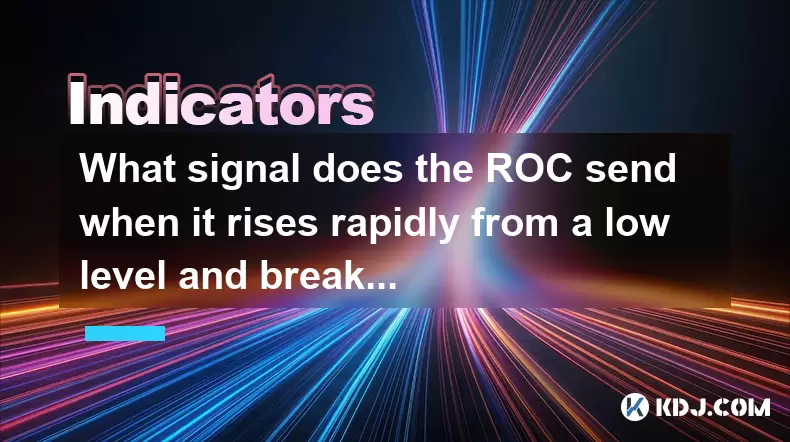
What signal does the ROC send when it rises rapidly from a low level and breaks through the zero axis?
Jul 27,2025 at 10:15am
Understanding the Rate of Change (ROC) IndicatorThe Rate of Change (ROC) is a momentum-based oscillator used in technical analysis to measure the perc...
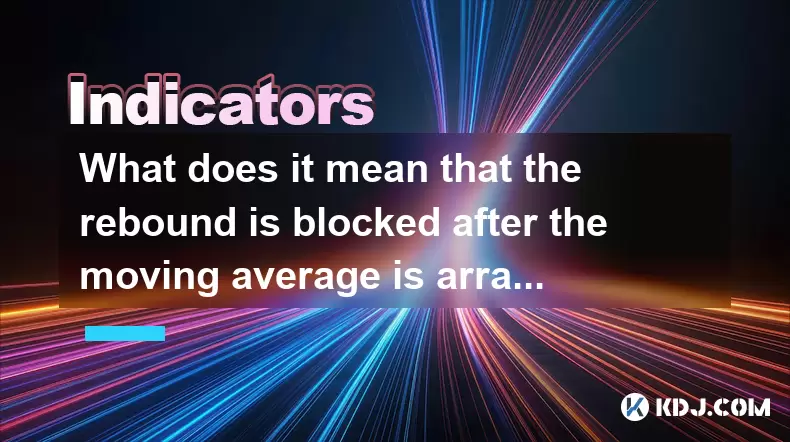
What does it mean that the rebound is blocked after the moving average is arranged in a short position for the first time?
Jul 26,2025 at 10:51am
Understanding the Short-Term Moving Average ConfigurationWhen traders refer to a 'short position arrangement' in moving averages, they are describing ...
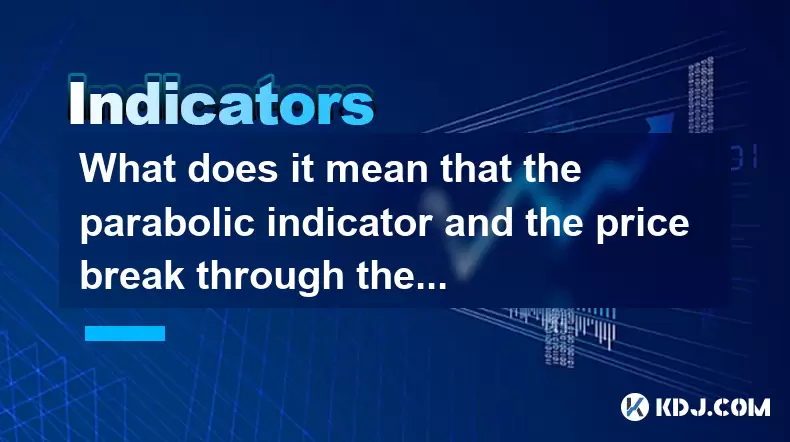
What does it mean that the parabolic indicator and the price break through the previous high at the same time?
Jul 26,2025 at 07:22pm
Understanding the Parabolic Indicator (SAR)The Parabolic SAR (Stop and Reverse) is a technical analysis tool developed by J. Welles Wilder to identify...
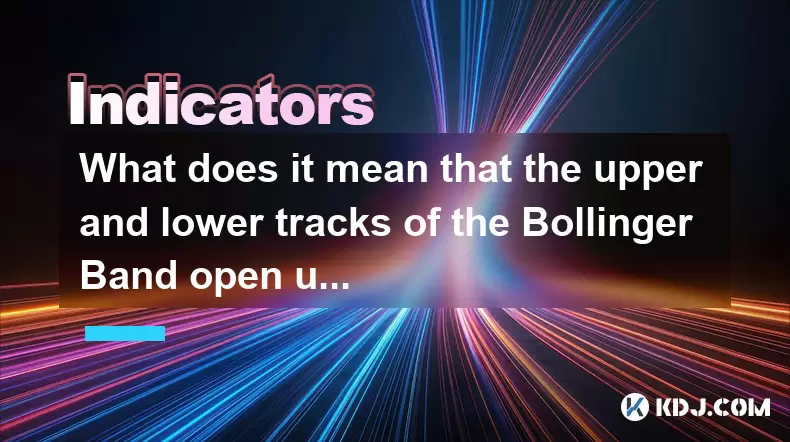
What does it mean that the upper and lower tracks of the Bollinger Band open upward at the same time?
Jul 27,2025 at 02:49pm
Understanding the Bollinger Band StructureThe Bollinger Band is a widely used technical analysis tool developed by John Bollinger. It consists of thre...
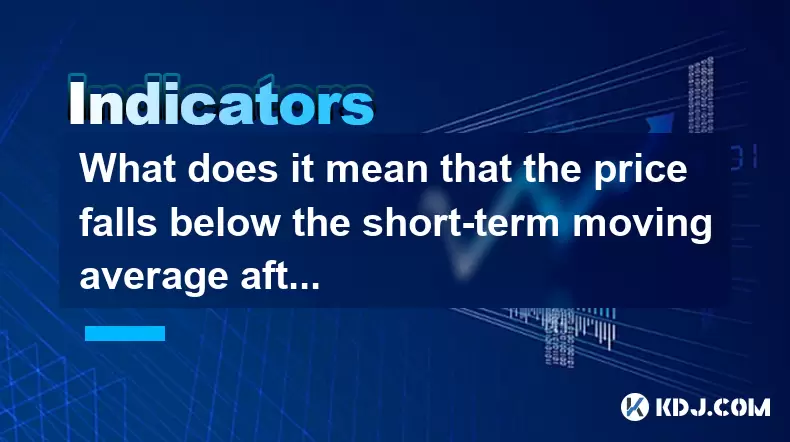
What does it mean that the price falls below the short-term moving average after the RSI top divergence?
Jul 26,2025 at 11:01pm
Understanding RSI Top Divergence in Cryptocurrency TradingThe Relative Strength Index (RSI) is a momentum oscillator widely used in cryptocurrency tra...
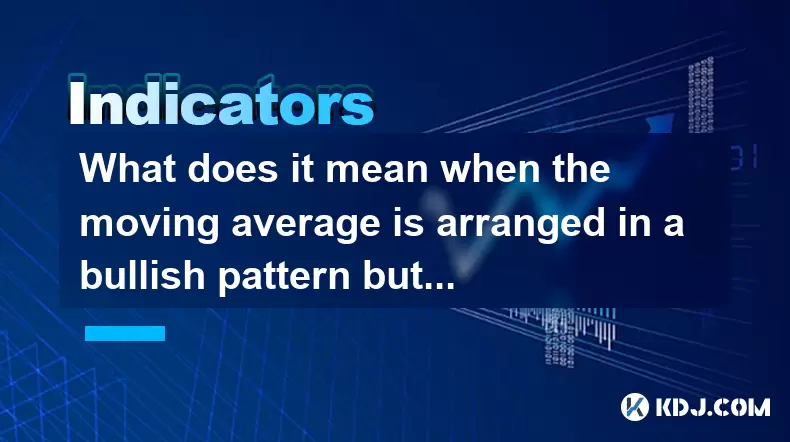
What does it mean when the moving average is arranged in a bullish pattern but the MACD bar is shortened?
Jul 27,2025 at 06:07am
Understanding the Bullish Moving Average PatternWhen traders observe a bullish moving average pattern, they typically refer to a configuration where s...

What signal does the ROC send when it rises rapidly from a low level and breaks through the zero axis?
Jul 27,2025 at 10:15am
Understanding the Rate of Change (ROC) IndicatorThe Rate of Change (ROC) is a momentum-based oscillator used in technical analysis to measure the perc...

What does it mean that the rebound is blocked after the moving average is arranged in a short position for the first time?
Jul 26,2025 at 10:51am
Understanding the Short-Term Moving Average ConfigurationWhen traders refer to a 'short position arrangement' in moving averages, they are describing ...

What does it mean that the parabolic indicator and the price break through the previous high at the same time?
Jul 26,2025 at 07:22pm
Understanding the Parabolic Indicator (SAR)The Parabolic SAR (Stop and Reverse) is a technical analysis tool developed by J. Welles Wilder to identify...

What does it mean that the upper and lower tracks of the Bollinger Band open upward at the same time?
Jul 27,2025 at 02:49pm
Understanding the Bollinger Band StructureThe Bollinger Band is a widely used technical analysis tool developed by John Bollinger. It consists of thre...

What does it mean that the price falls below the short-term moving average after the RSI top divergence?
Jul 26,2025 at 11:01pm
Understanding RSI Top Divergence in Cryptocurrency TradingThe Relative Strength Index (RSI) is a momentum oscillator widely used in cryptocurrency tra...

What does it mean when the moving average is arranged in a bullish pattern but the MACD bar is shortened?
Jul 27,2025 at 06:07am
Understanding the Bullish Moving Average PatternWhen traders observe a bullish moving average pattern, they typically refer to a configuration where s...
See all articles

























































































